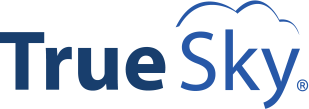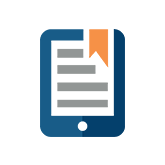The Importance of Decision-based Costing
The following article is from guest blogger, Gary Cokins.
Managers are increasingly shifting from reacting to after-the-fact reported outcomes to anticipating the future with predictive analysis and proactively making adjustments with better decisions. Despite some advances in the application of new costing techniques such as activity-based costing, are management accountants adequately satisfying the needs of managers and employee teams for decision-based cost information? Or is the gap widening? That is, are the accountants still just counting the beans, or are they helping to grow them?
There is a difference between what management accountants report and what managers and employee teams want. This does not mean that information produced by accountants is of little value. In the last few decades, accountants have made significant strides in improving the utility and accuracy of the costs they calculate and report. The gap is being caused by a shift in managers’ needs – from needing to know what things cost (such as a product cost) and what happened – to a need for more purposeful information about what their future costs might be and why – what can happen?

What is the purpose of management accounting?
Contrary to beliefs that the only purpose of managerial accounting is to collect, validate, transform and report data, the primary management accounting purpose is first and foremost to influence behavior at all levels – from the desk of the CEO down to each employee – and it should do so by supporting decisions. A secondary purpose is to stimulate investigation and discovery by signaling relevant information (and consequently bringing focus) and generating questions.
The widening gap between what accountants report and what decision makers need involves the shift from analyzing descriptive historical information to analyzing predictive information, such as:
- Budgets
- Cost estimates
- What-if scenarios
Obviously, all decisions can only affect the future, because the past is already history. However, there is much that can be learned and gained from historical information. Although accountants are gradually improving the quality of reported history, decision makers are shifting their view toward better understanding the future.
This shift is a response to a more overarching shift in executive management styles – from a command-and-control emphasis that is reactive (such as scrutinizing cost variance analysis of actual versus planned outcomes) – to an anticipatory, proactive style where organizational changes and adjustments, such as staffing levels, can be made before things happen and before minor problems become big ones.
An Accounting Framework and Taxonomy
The large domain of accounting has three components:
- Tax accounting
- Financial accounting
- Managerial accounting
There are two types of data sources. One source is from financial transactions and bookkeeping, such as purchases and payroll. The other source is non-financial measures such as payroll hours worked, retail items sold, or gallons of liquid produced.
Financial Accounting and Reporting
The financial accounting component is intended for external reporting, such as for:
- Regulatory agencies
- Banks
- Stockholders
- The investment community.
Financial accounting follows compliance rules aimed at economic valuation, and as such is typically not adequate or sufficient for internal decision making within an organization. (The tax accounting component is its own world of legislated rules.)
Managerial Accounting
Our area of concern – the management accounting component – can be broken into three categories: cost accounting, cost reporting and analysis, and decision support with cost planning. To oversimplify a distinction between financial and managerial accounting, financial accounting is about valuation and managerial accounting is about value creation through good decision making.
The managerial accounting component is comprised of three categories that are all recipients of inputs from the “cost measurement” procedure of transforming incurred expenses (or their obligations) into calculated costs:
- Cost Accounting represents the assignment of expenses into outputs, such as the cost of goods sold and the value of inventories. It primarily provides external reporting to comply with regulatory agencies.
- Cost Reporting and Analysis represents the insights, inferences and analysis of what has already taken place in the business in order to track performance.
- Decision Support with Cost Planning involves decision making and taking. It also represents using the historical cost reporting information in combination with other economic information, including forecasts and planned changes (e.g., processes, products, services, channels) in order to make the types of decisions that lead to financial success.
The last two categories offer diagnostic support to interpret and draw inferences from what has already taken place and what can happen in the future, respectively. Cost reporting and analysis is about explanation. Decision support with cost planning is about possibilities.

What? So what? Then what?
The message at the bottom of the diagram is that the value and usefulness of the information increase, arguably at an exponential rate, from the left side to the right side of the diagram. Cost reporting displays the reality of what has happened, and provides answers to “What?” That is, what did things cost last period?
However, an obvious follow-up question should be “So what?” That is, based on any questionable or bothersome observations, is there merit to making changes and interventions? How relevant to improving performance is the outcome we are seeing? But this leads to the more critical need to propose actions – to make and take decisions – surfaced from cost planning. This is the “Then what?” question. For example, what change can be made or action taken (such as a distributor altering its distribution routes), and what is the ultimate impact? Should we internally make a product or deliver a service, or should we purchase it or outsource it?
Business analytics and cost modeling
Of course, any proposed changes will lead to multiple effects on customer service levels, quality and delivery times, but the economic effect of profits and costs should also be considered. This gets to the heart of the widening gap between accountants and decision makers who use accounting data. To close the gap, accountants must change their mindset from managerial accounting to managerial economics – nicknamed here as “decision-based costing.”
This is where business analytics, especially predictive analytics, comes into play. The ultimate way that managers can test the outcome of decisions is to deploy robust methods of forecasting combined with valid cost-estimating techniques based on reliably measured past-period “calibrated” cost consumption rates, such as from an activity-based costing system. Then they will be more confident that what they want to change will have the effect that they expect and desire.

ABOUT THE AUTHOR
Gary Cokins, CPIM
Gary Cokins (Cornell University BS IE/OR, 1971; Northwestern University Kellogg MBA 1974) is an internationally recognized expert, speaker, and author in enterprise and corporate performance management (EPM/CPM) systems. He is the founder of Analytics-Based Performance Management LLC www.garycokins.com . He began his career in industry with a Fortune 100 company in CFO and operations roles. Then 15 years in consulting with Deloitte, KPMG, and EDS. From 1997 until 2013 Gary was a Principal Consultant with SAS, a business analytics software vendor. His most recent books are Performance Management: Integrating Strategy Execution, Methodologies, Risk, and Analytics and Predictive Business Analytics.
As managerial accounting is becoming more important to forward thinking organizations, the role of the CFO is changing. CFOs and other c-level finance executives are becoming more accountable, not only to stakeholders and the public, but to the organization itself. Understandably, it’s a daunting task for anyone who’s never done this before or very little, and there are tools that can help. True Sky is a sophisticated budgeting tool that is embedded into Excel to help organizations streamline and manage the budgeting, planning and forecasting process.
Learn more about a Planning, Budgeting & Forecasting solution.




